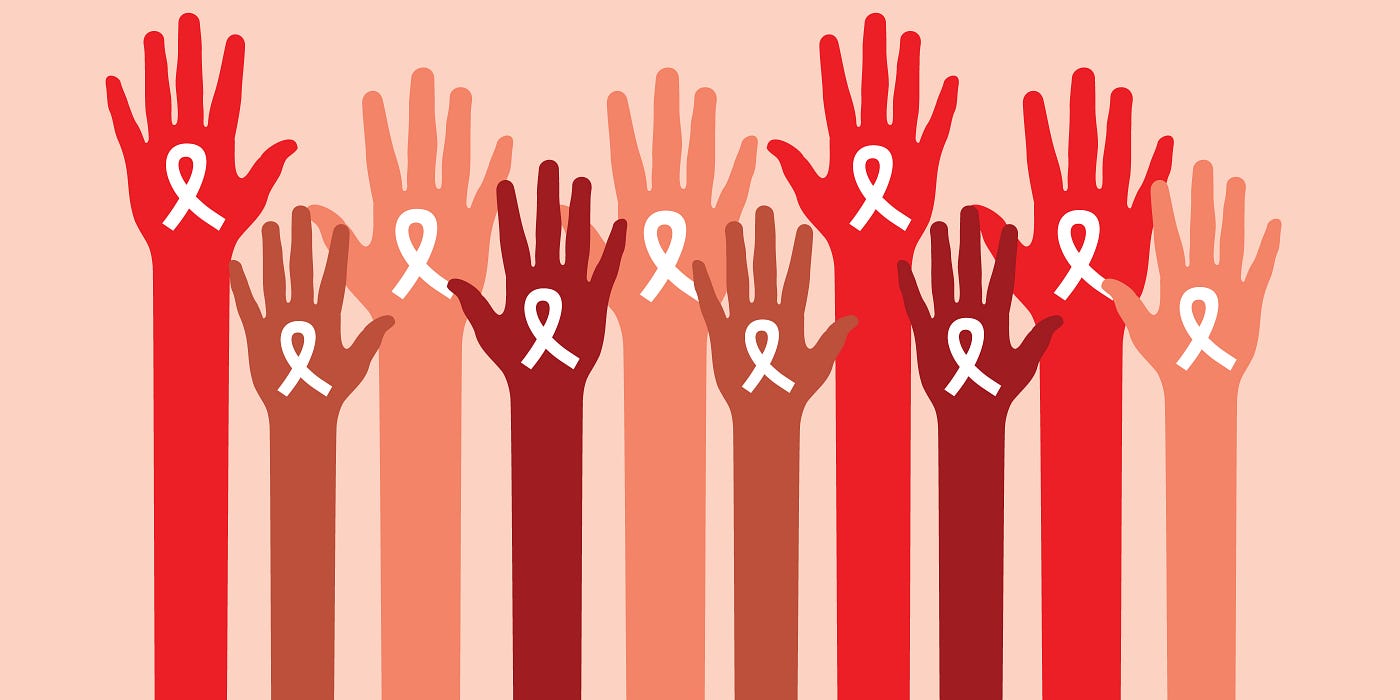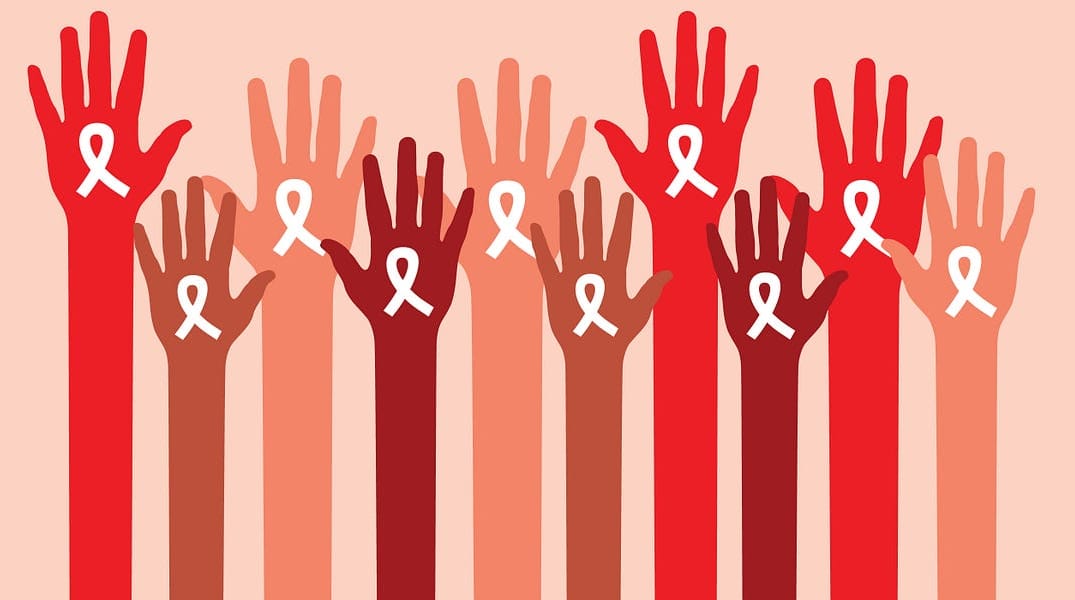By Ellen Black

In preparation for World AIDS Day on December 1, we’ve partnered with San Francisco’s own Shanti Project to tell stories from some of the unsung heroes of the AIDS epidemic. Chip Supanich is on the San Francisco HIV Health Services Planning Council and is a member of the Mayor’s Disability Council. He’s also been a Shanti Project volunteer and client since the ’90s and now serves on its board. We asked Chip to reflect on his experience battling the AIDS epidemic in San Francisco for the past 20 years, the role Shanti Project has played, and how the city is planning to support its residents living with HIV/AIDS in the future.
How was HIV/AIDS perceived in San Francisco when you started volunteering with Shanti in 1997?
There were still a lot of people very seriously ill around that time. Protease inhibitors had arrived in mid-1996, which were essentially rescuing people from certain death, but these new medicines were toxic, frequently producing serious side effects. Additionally, new “cocktail” treatment combinations often came with complicated dosing regimens. Because these new meds were saving lives, public attention and the press began to shift away from HIV/AIDS. And so did the funding. This was precisely when demand for services escalated, as people with AIDS were enjoying increased longevity, but were still disabled. Things such as housing, food, alternative therapies, mental health services, transportation, and psycho-social support were still necessary for many folks — and still are today! AIDS Service Organizations were caught in the middle. Thankfully, this model of care for people with HIV has continued, due to the ingenuity and dedication of advocates and activists from the community.
You currently serve on the San Francisco HIV Health Services Planning Council. How is the city looking to better support its residents living with HIV/AIDS?
Through partnerships, collaboration, and the inclusion of people with AIDS in the decision making processes within the city and county, we are seeing city efforts aimed at facing several key issues, including the lack of truly affordable housing for our most vulnerable neighbors, the complexities of aging with HIV/AIDS (over 50% of people infected with HIV in San Francisco are 50 or older), and positioning ourselves for a future in which federal and state funding for services will continue to dwindle.
Despite the absence of a cure, many people are under the impression that HIV/AIDS is “under control.” Why is Shanti’s work still so important?
Shanti’s work is so important because people with life-threatening illnesses still need someone on their side, in their corner. More than a companion or a friend, Shanti volunteers are carefully trained angels that enter people’s lives to be a witness to someone’s story and validate their experiences. Many of Shanti’s clients have very little or no emotional support from family or neighbors. To paraphrase the Executive Director of Shanti, Kaushik Roy: Shanti volunteers do for our clients what neighbors used to do for one another. As Shanti continues to expand services to people with cancer, the need for our services will continue to climb. And people continue to be infected with HIV, particularly people of color, women, transgendered, and young people. The need for services is not going away.
After about 18 months volunteering, you became a Shanti client. What was that transition like? Can you describe the relationship you had with your volunteer and how it affected your health and well-being?
The transition was easy on the one hand — I simply asked for a peer support volunteer of my own, and had one within a month. On the other hand, the internal transition was more lengthy and difficult. I’m talking about the process of accepting the fact that I needed help, and needed to ask for it. After several years of good health, I thought I was out of the woods, but life has twists and turns. I was allergic to some of the new medicines, others were too toxic, and the virus had mutated against still others. My treatment options were few and my health declined. Coming to terms with all of that took time, and the presence of a peer support volunteer from Shanti made that adjustment easier and also meant that I didn’t have to face uncertainty alone!
I have had the same Shanti volunteer since 2003, Ashley. She is my confidant, my companion, and my friend — the little sister I never had, and an essential part of my support network. Ashley has stayed in my life longer than any man/partner ever did and she did it with compassion, laughter and love!
December 1st Shanti is commemorating 40 years of service on World AIDS Day with its Gratitude in the Grove event. What are some of the memories you’ll be reflecting on?
My reflections on World AIDS Day are always a mixture. There will be the feelings of grief and loss for those many brave people who had their lives cut so short by AIDS. I also feel great pride in the San Francisco Model of Care, which was developed as a response to the epidemic and treats the entire individual, addressing all of their needs, applying a patient-centered approach to all facets of care. The psycho-social support Shanti provides remains an integral part of that model. And finally, it’s at such gatherings as Shanti’s Remembrance Evening that I deeply feel the camaraderie, the community and the commitment that thousands of men and women have brought to all aspects of the epidemic, from prevention efforts, to social justice issues to treatment and care.
What advice do you have for anyone thinking about volunteering with Shanti?
For relatively little time commitment (3–5 hours/week), you can be the difference between zero and one in a person’s life. You can choose to stand up and have the privilege to witness their story and support them in their time of need, when no one else is there. You can be the Shanti Peer Support Volunteer that brings compassion into another’s life. It costs nothing. It takes so little effort. But for our clients, it has the potential to change everything! Love heals and YOU can do this!
How can your average San Franciscan make a difference in the fight against HIV/AIDS?
I can only answer this question with a three-pronged answer: Learn the facts, protect yourself from infection, and lend a hand to others in whatever way is meaningful to you.
There’s even more to learn more about Shanti Project and their upcoming event!







